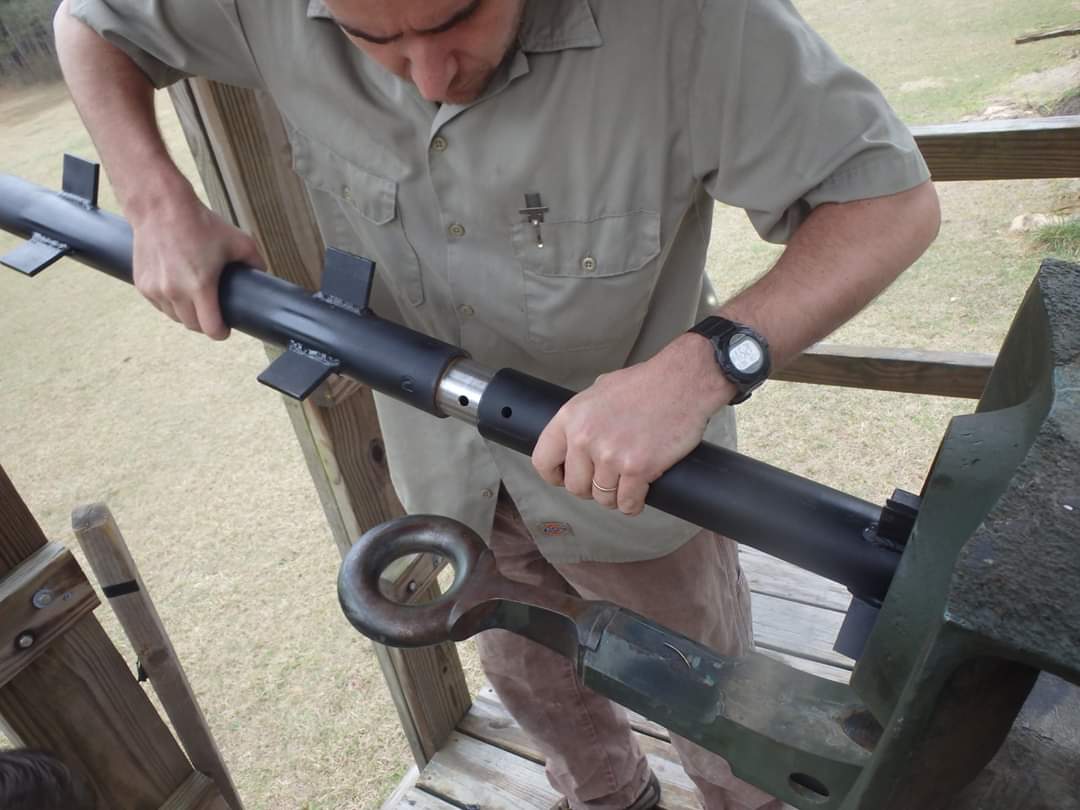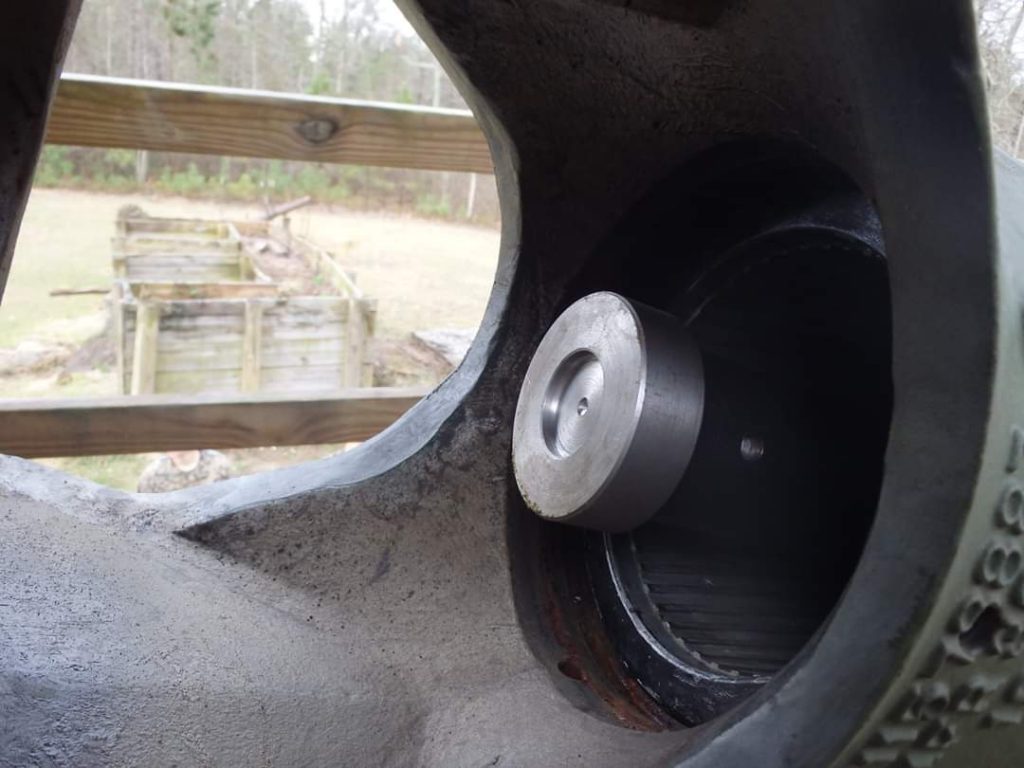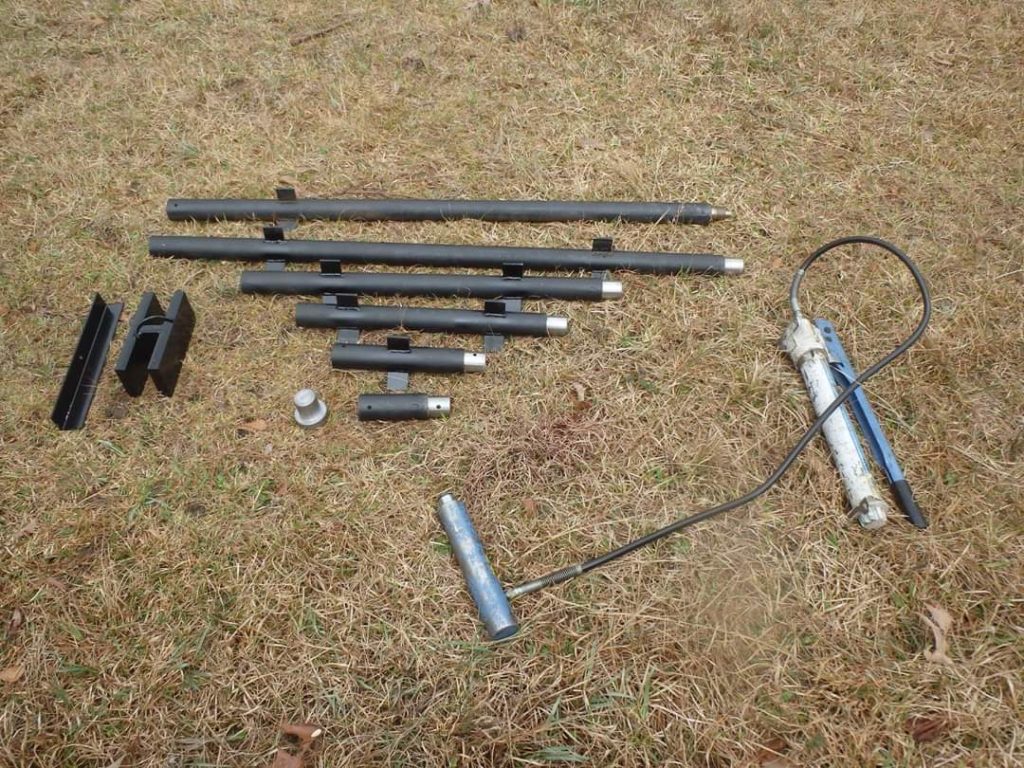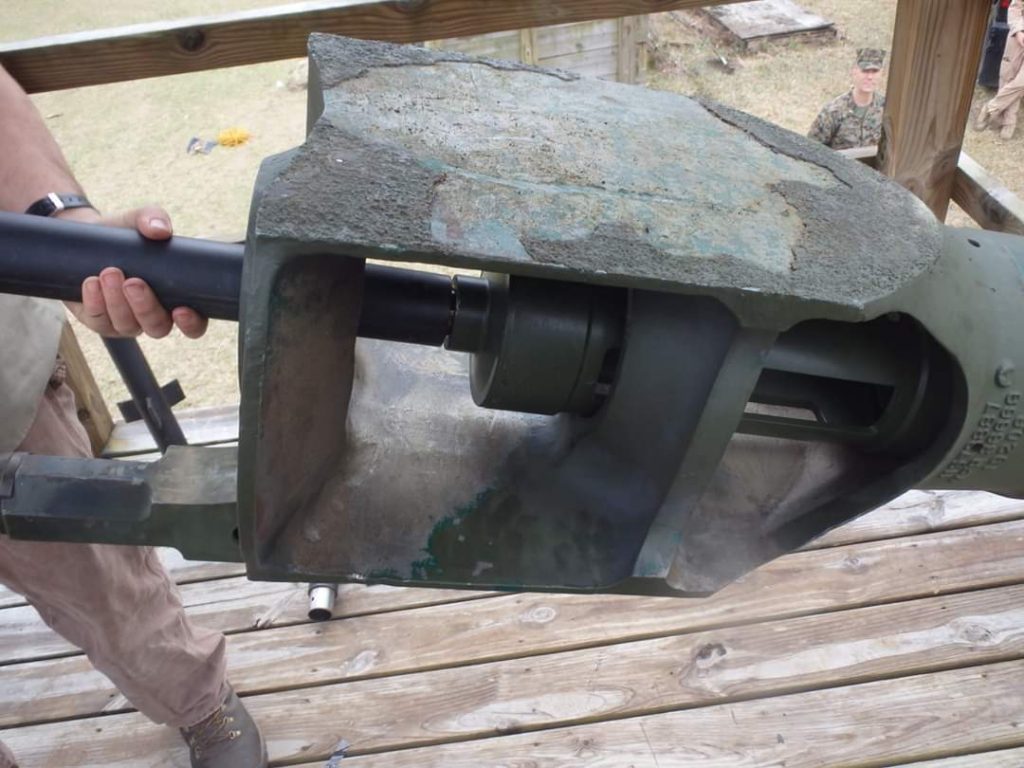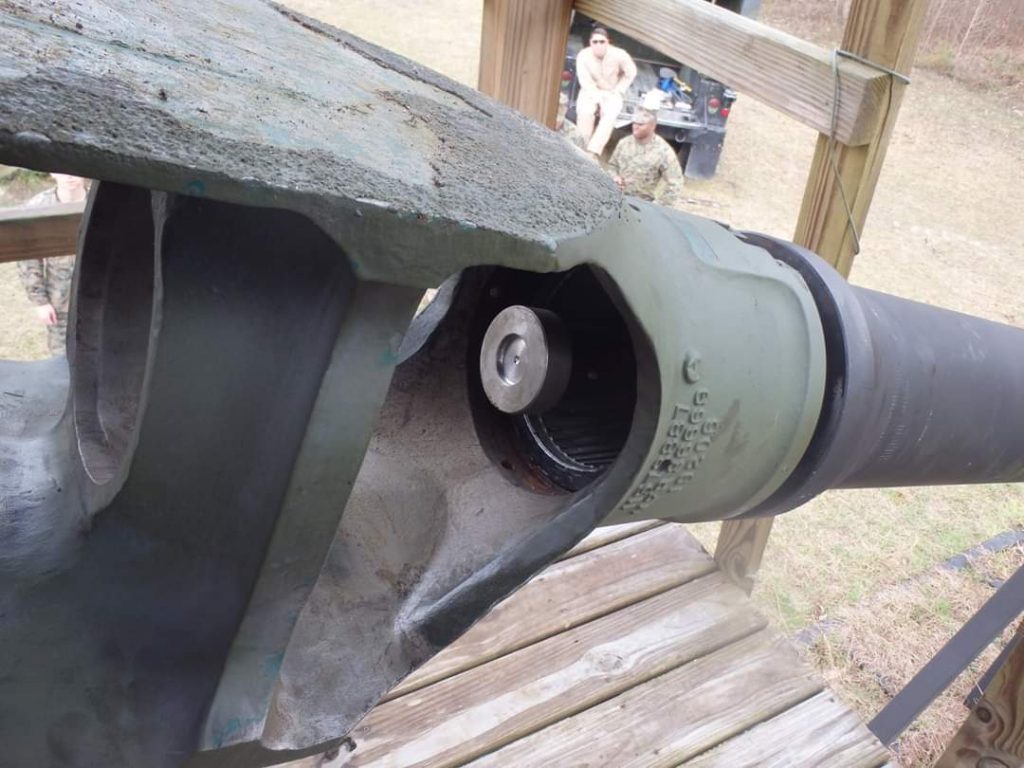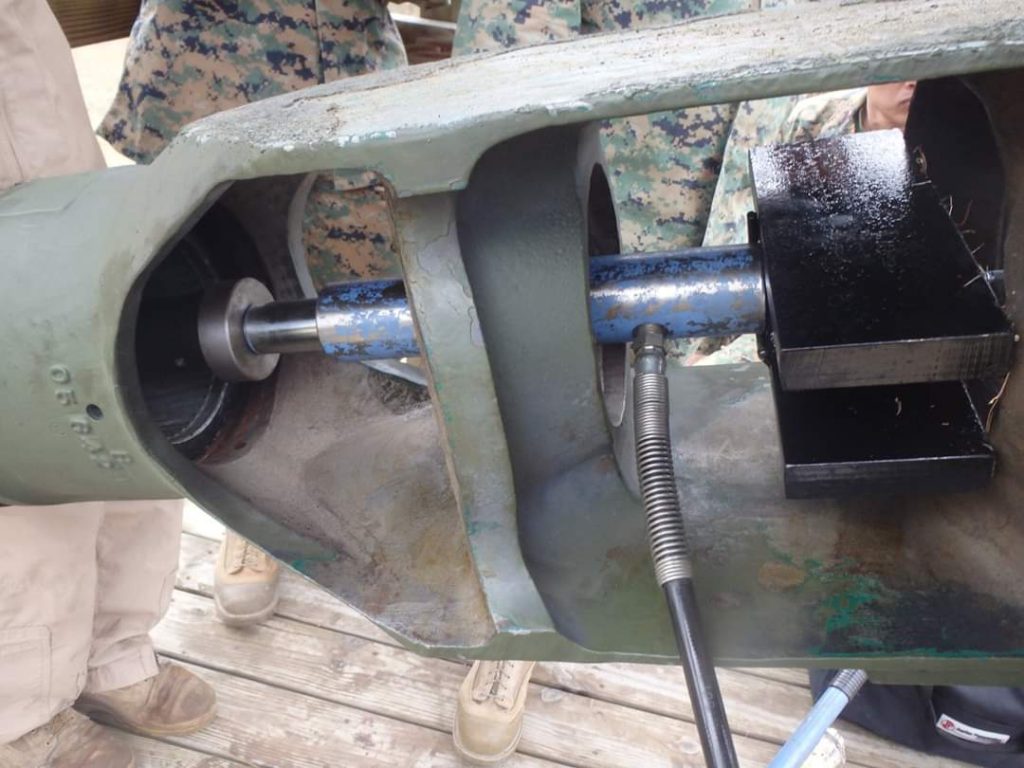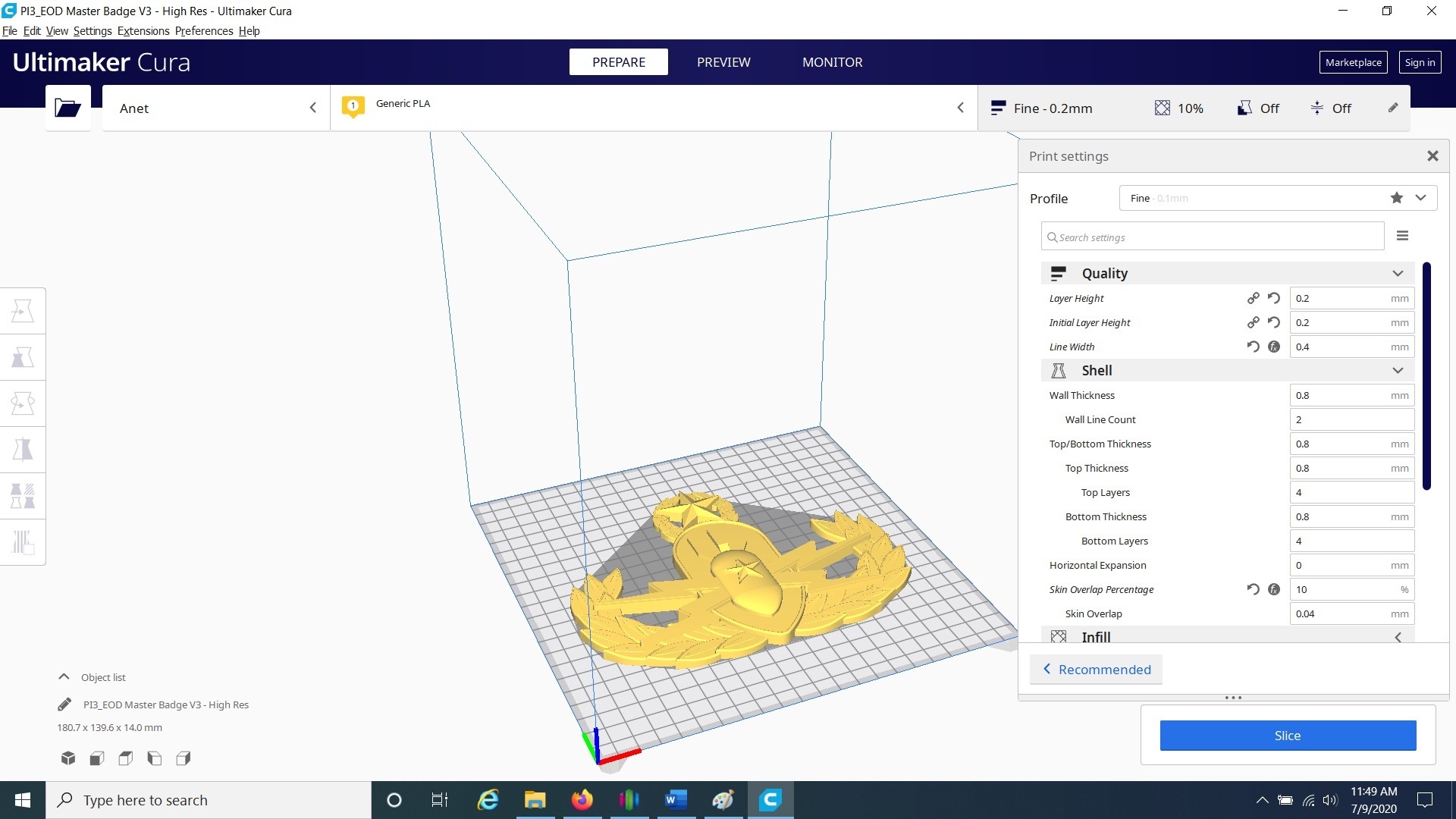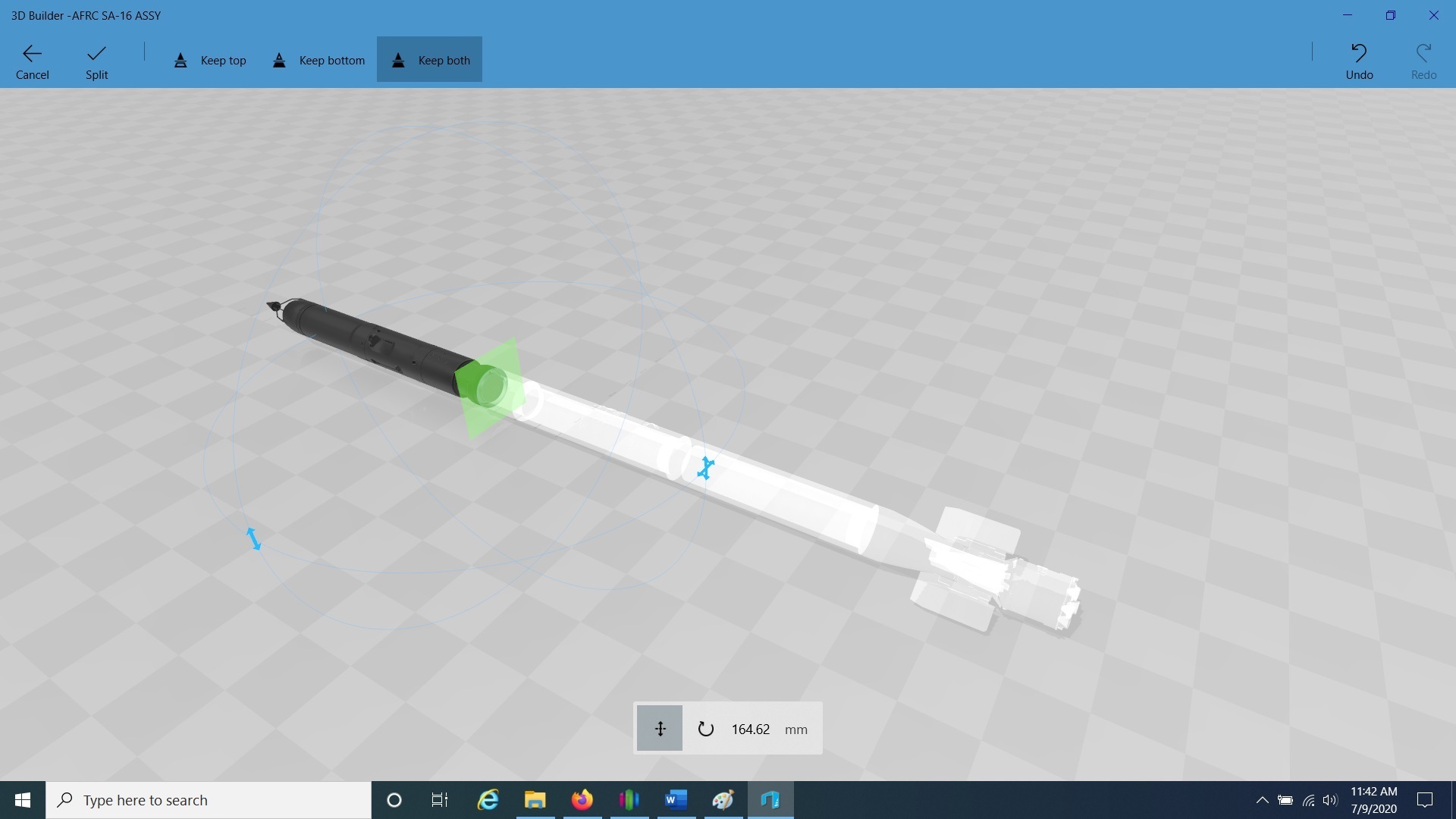By Daniel Evers
We took a M795 and stuck a M767 ET Fuze on it. We drove the projo into a triple 7 barrel and then had 2 On Kob Trainees hammer it in. At the muzzle, the Artillery Projectile Extractor (APE) which is already SL3 to the Gun is connected to the first pipe and inserted down the tube.
Each section of pipe snaps together and has stand off fins to keep them centered. The fins now have aluminum runners on them to protect the bore of the barrel from damage. The pipes are different lengths so you can use different ones depending on where in the tube the bullet is.
Once the APE makes contact with the projo, a press plate is inserted into the final pipe up by the muzzle. A brace block is inserted into the muzzle and locked into place with a bolt and brace. Finally, a Port-A-Power is pumped between the press plate and the brace block. All the hydraulic power gets put directly on that projo and pops it right out. No 50 Cal, No Water, No 20 LCpls with a Bell Rammer, No 7 ton procedure that “doesn’t exist”.
This is not intended to be an EOD tool. This is intended to be an Artillery tool. My goal here is to give Arty a tool that would keep them from having to call us out unless the projectile is stuck so bad that the barrel will no longer be good to use. This thing is cheap, simple and is infinitely scalable. This is for the 155mm. Others are in the works.
